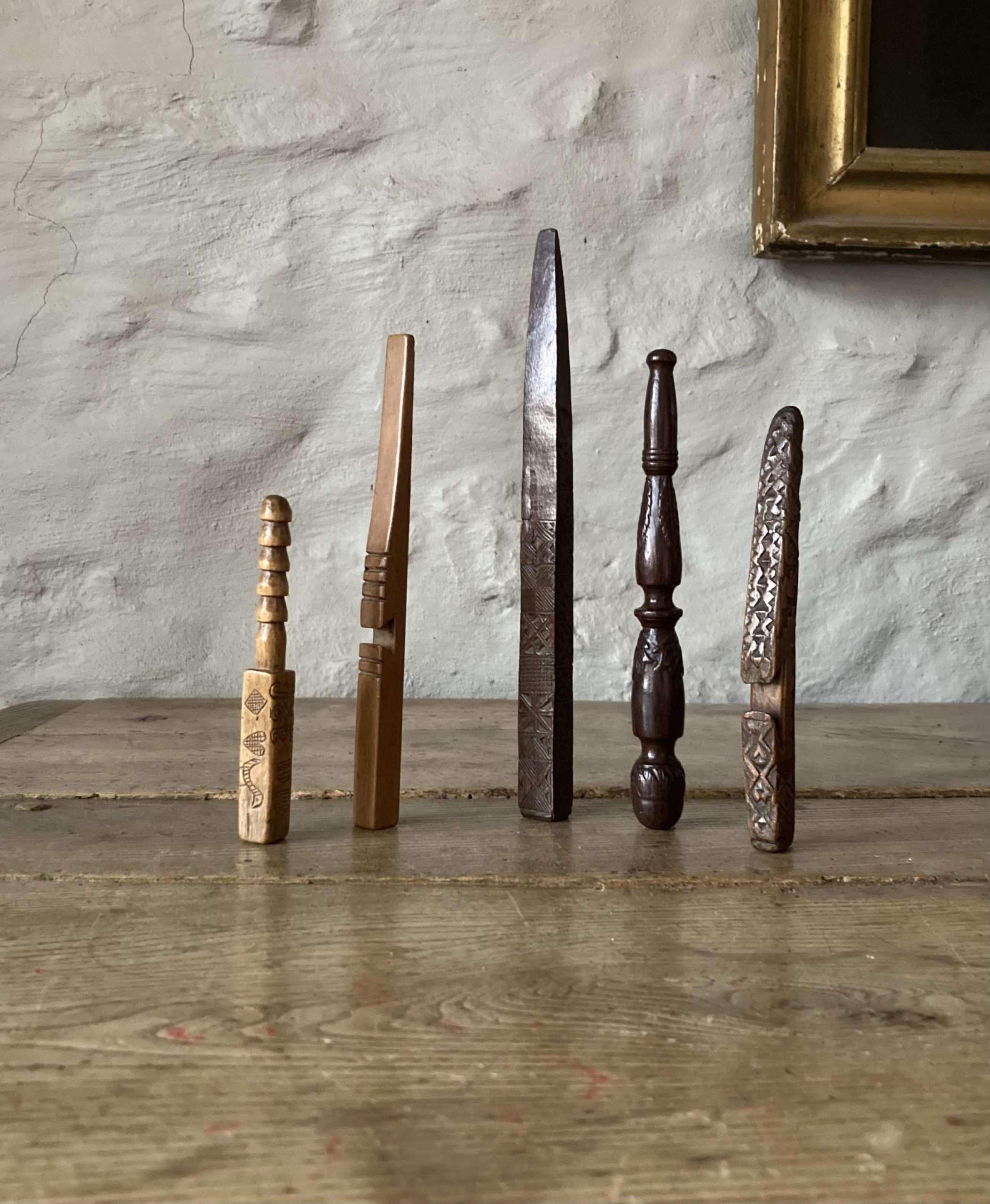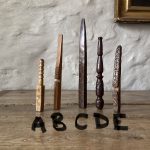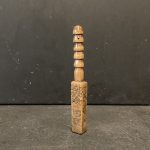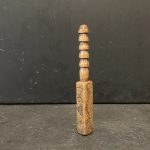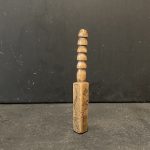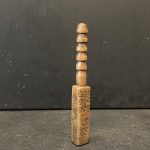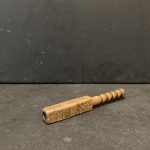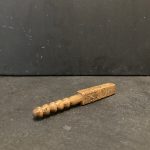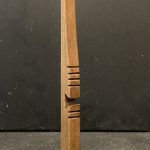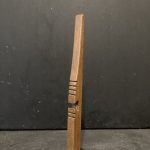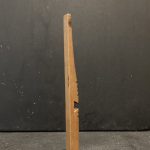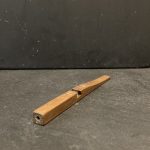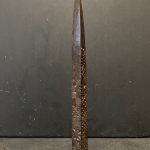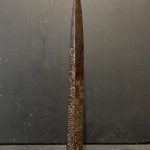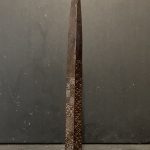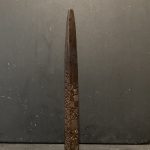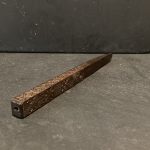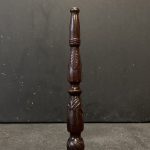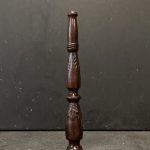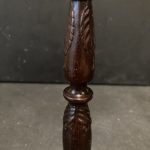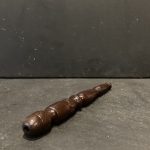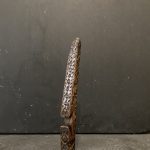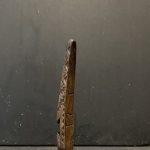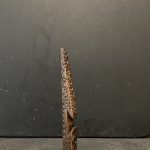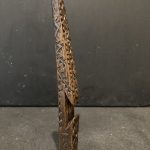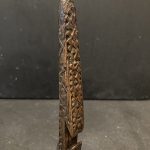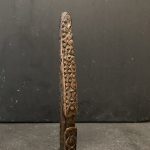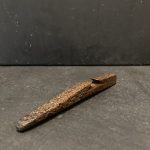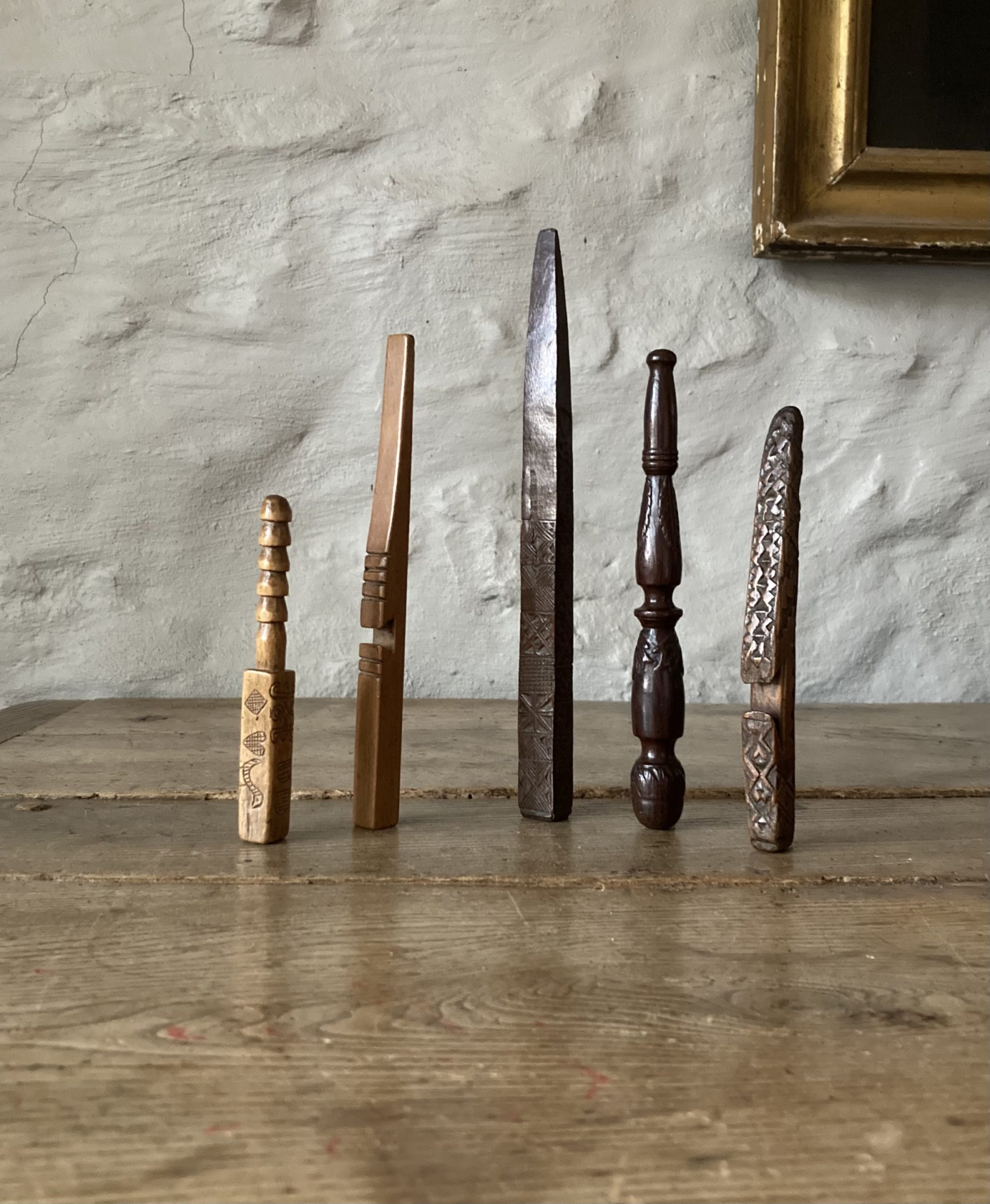Provenance: The St John & Judy Stimson treen & folkart collection Pembroke (formerly the Museum of the Home, Westgate Street, Pembroke).
A. a wonderful small knitting sheath with scrimshaw style carving.
British 19th century
5” long / 12.7cm
£280
B. a simple sycamore knitting sheath.
British late 19th century
7” long / 17.7cm long
£105
C. a hardwood (possible beech) kitting sheath, beautifully chip carved decoration and with rich colour.
British Late 18th/early 19th century
9¼” long / 23.4cm long
£275
D. a19th century carved and turned spiral knitting sheath or knitting stick, made from richly patinated fruitwood, possibly plum.
Northern England
7¼” long / 18.4cm long
£260
E. a beautiful chip carved knitting sheath, and carved with the initials IS.
British late 18th/early 19th century
6¼” long / 15.8cm long
£255
As is the case with most rural communities, knitting has been a general pursuit among the peasant folk of Wales. A traveler in Wales in 1797: “Kniiting… is the general lesuire work of both sexes, in Wales…and it cannot fail of giving strangers a high Odesa of the industry of the people to see the men and women going to market with burdens on their heads, while their hands are employed in working the fleeces of their own sheep into articles of dress”
The use of the stick “sheath” was to support a needle to work from during the process of knitting and for this purpose it had a hole in the end to receive the needle.”
The majority are of wood, and in many of these are the home-made gifts of young men to their sweethearts; such may be decorated with chip-carving, and bear initials and dates.
From the Guide to the collection of Welsh Bygones, Iorweth Peate – National Museum of Wales 1927
See also:
Knitting Sticks & Sheaths – A History by Dr Ian McFeeters, Bleasdales Ltd 2016
Treen and other Wooden Bygones by Edward H Pinto, London 1968




